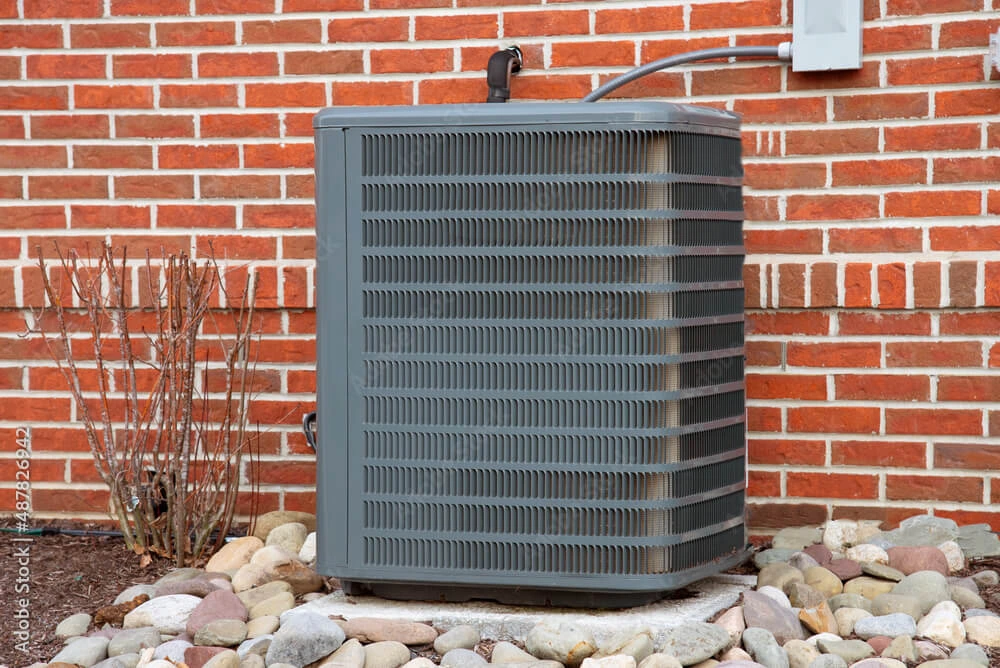Outdoor Unit? Indoor Unit? What Do I Need for My Space?
Choosing the right HVAC system for your home involves understanding the different options available and how they fit into your specific living space. Most homeowners face the challenge of deciding whether an outdoor unit, an indoor unit, or a combination of both is the best choice for their needs. Then they find out there are multiple options available for each, and it becomes even more complex. This decision is crucial as it affects not only the comfort of your home but also the efficiency and cost-effectiveness of your heating and cooling solution.
In this article, we’ll explore the most common types of HVAC systems. As you consider what’s right for your space, it’s important to evaluate the characteristics of each type of system and how they align with your living environment and lifestyle needs.
Prioritize Energy Efficiency and Comfort
When choosing the type of HVAC system for your home, prioritizing energy efficiency and comfort is key. It’s essential to select a system type that aligns with your specific requirements for maintaining a comfortable indoor climate while also being energy efficient.
Remember, the optimal choice for your home may differ significantly from that of your neighbor, as each home varies in architectural style, insulation levels, and exposure to the elements.
Each system type offers unique advantages in terms of energy efficiency and climate control capabilities. It’s also wise to consider the latest technologies that some systems incorporate, like programmable smart thermostats or integration with smart home devices.
Standard Split Systems
Standard split systems are one of the most common types of HVAC systems found in homes today. They are called “split” because they are made up of components that are located both inside and outside the home. Typically, they include an outdoor unit containing the outdoor compressor and condenser, and an indoor heating unit that houses the air handler or furnace and evaporator coil. This setup is advantageous because it allows for efficient space utilization and noise reduction, with the noisier components, like the compressor and condenser, located outside.
Furnace and Air Conditioner
This configuration is a popular choice for homes located in areas with significant temperature fluctuations between seasons. In a furnace and central air conditioner split, the furnace provides heat during the colder months while the air conditioning unit cools the home in the warmer months. The indoor unit typically houses the furnace, which uses natural gas, oil, or electricity to generate heat. The outdoor unit contains the air conditioner’s compressor and condenser, which work together to remove heat from the indoor air. This type of system is efficient for those who need robust heating solutions and prefer the convenience of having a single system for both heating and cooling.
Air Handler and Heat Pump
The air handler and heat pump is an excellent choice for climates with mild winters. The heat pump functions in both heating and cooling modes, making it a versatile year-round solution. During the warmer months, the heat pump works like a traditional air conditioner, expelling heat from the house. In cooler weather, it reverses the process, extracting heat from the outside air and moving it indoors to warm the house. The indoor unit, or air handler, circulates air throughout the home and works in tandem with the heat pump to maintain comfortable indoor temperatures. This type is energy-efficient and can reduce overall energy costs since the heat pump uses electricity to move heat rather than generating it directly.

Hybrid Split Systems
Also known as dual-fuel systems, these combine the best features of different heaters to offer a versatile and efficient heating and cooling solution. These typically pair a heat pump with a gas furnace, utilizing the heat pump for both heating and cooling during milder temperatures and switching to gas power when the temperature drops significantly. This setup allows it to operate at peak efficiency by choosing the most cost-effective heating method based on the current weather conditions.
The Benefits of a Hybrid Split System
The hybrid system’s ability to switch between fuel types automatically makes it an ideal choice for regions with cold climates. By using electricity when it’s milder and gas when it’s colder, hybrids optimize energy use and reduce overall operational costs. This adaptability not only ensures maximum comfort but also enhances energy savings throughout the year.
Packaged Heating and Air
Packaged heating and air systems consolidate all essential HVAC components—compressor, condenser, evaporator, and furnace—into a single unit, typically situated outside the home. This design is distinctly different in that it does not divide components between indoor and outdoor locations.
One of the primary benefits of packaged heating and air is their space efficiency. By housing all components in one unit, they are particularly well-suited for homes with limited indoor space, eliminating the need for indoor installation and freeing up room for other uses. Additionally, they offer ease of installation and maintenance. Since all parts are accessible in one location, installation tends to be quicker, and maintenance or repairs can be performed more efficiently, potentially lowering labor costs and reducing service downtime.
Packaged systems are also known for their energy efficiency. Many modern units include high-efficiency features such as advanced compressors and fans, which help decrease your energy consumption and energy bills. Furthermore, these systems are available in various configurations, including electric heat pumps, air conditioners with electric heat, or gas-electric systems, offering versatility to meet different heating and cooling needs based on climate or energy preferences.
Zoned
Zoned HVAC systems provide a highly efficient way to regulate temperature across different areas or “zones” within a home. This approach involves using multiple thermostats connected to a central control panel, which operates dampers within the ductwork of your HVAC system. By creating specific zones, the system can deliver heated or cooled air where it is needed most, based on individual preferences and room usage.
The benefits of zoned systems are particularly compelling. First, they offer enhanced comfort by allowing different temperatures in various parts of the house. For instance, you can keep the living room cool during the day without overcooling the bedrooms. This tailored temperature control helps avoid the common disagreements about setting a uniform temperature throughout the house. Additionally, zoned systems are more energy-efficient because they reduce the need to heat or cool areas that are seldom used, such as guest rooms or large storage areas.
Geothermal Heat Pump
A geothermal heat pump, also known as a ground source heat pump, is a heating and cooling system that leverages the earth’s constant underground temperature to regulate the climate inside your home. This type of system consists of an indoor handling unit and a series of pipes, known as an earth loop, buried in the ground near your property.
The operation of a geothermal heat pump is based on a simple principle: the earth a few feet below the surface remains at a relatively consistent temperature throughout the year, regardless of the weather conditions outside. During the winter, the system extracts heat from the earth via the loop and transfers it indoors to warm your home. Conversely, in the summer, it removes heat from your home and discharges it into the ground, thus cooling the interior.
Geothermal systems are highly praised for their efficiency and sustainability. They provide significantly more energy savings than conventional HVAC systems because they merely transfer heat instead of generating it by burning fuel. This efficiency translates to substantial savings on utility bills and a lower environmental impact. Furthermore, geothermal systems are known for their longevity and reliability; they have fewer moving parts, which reduces the risk of wear and tear, and the underground components are typically warranted for up to 50 years.
Ductless Mini-Split System
A ductless mini-split is a versatile and efficient heating and cooling solution that does not require extensive ductwork. It consists of an outdoor compressor or condenser unit and one or more indoor air-handling units. These components are connected by a small conduit that houses the power cable, refrigerant tubing, and a condensate drain.
Mini – splits are particularly beneficial for their flexibility in heating and cooling individual rooms or zones within a home. Each indoor unit can be controlled independently, allowing for personalized temperature settings in different areas. This not only enhances comfort but also increases energy efficiency, as you only heat or cool the spaces in use, reducing wasted energy.
Additionally, ductless mini-splits are known for their relatively easy and non-invasive installation process, which typically only requires a small hole to be drilled into the wall for the conduit. This makes them ideal for older homes without existing ductwork, room additions, or properties where extending or installing ductwork is impractical or too costly.
Still Unsure?
Call Empire Plumbing & AC today and our skilled technicians will help you determine the right choice for your home to help you start living more comfortably.

